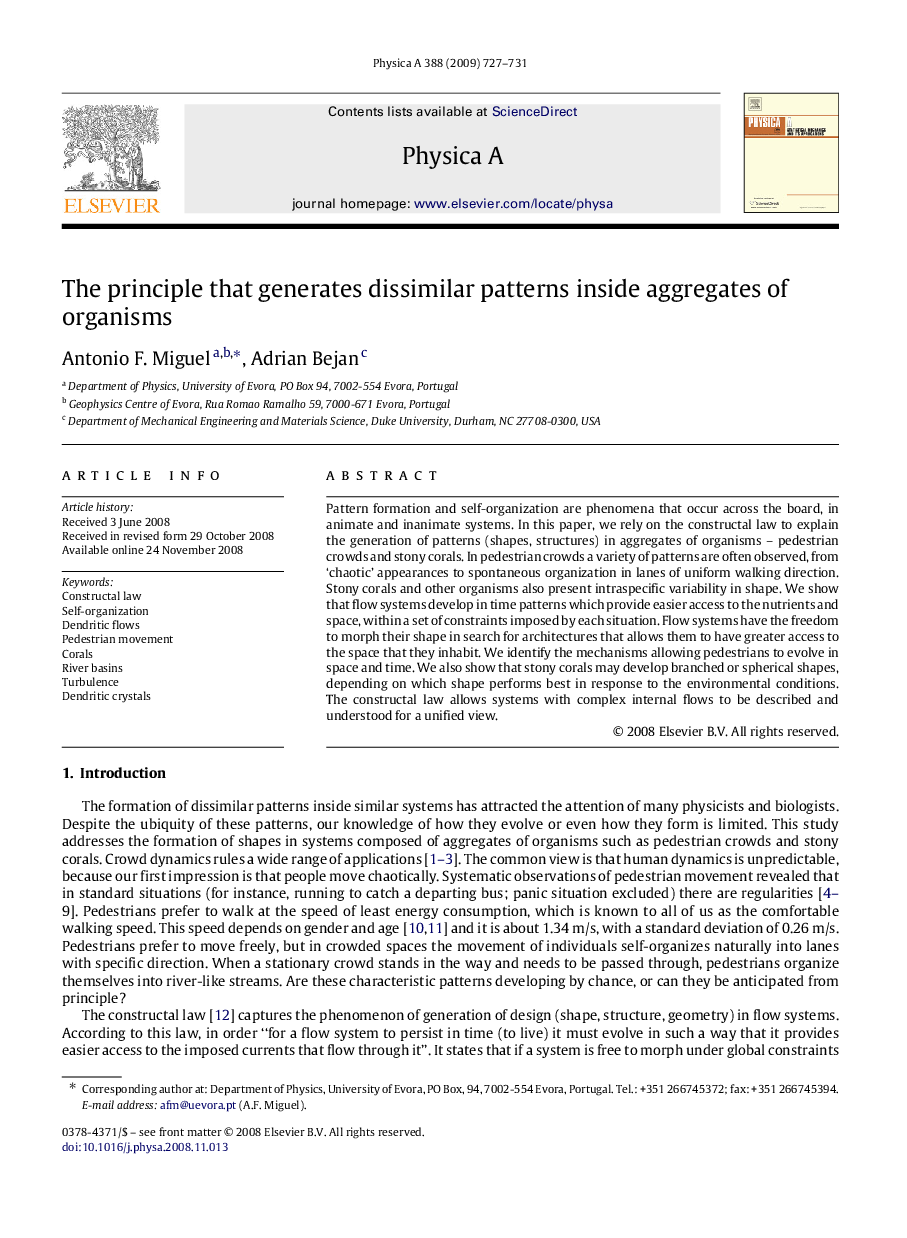| Article ID | Journal | Published Year | Pages | File Type |
|---|---|---|---|---|
| 978671 | Physica A: Statistical Mechanics and its Applications | 2009 | 5 Pages |
Pattern formation and self-organization are phenomena that occur across the board, in animate and inanimate systems. In this paper, we rely on the constructal law to explain the generation of patterns (shapes, structures) in aggregates of organisms–pedestrian crowds and stony corals. In pedestrian crowds a variety of patterns are often observed, from ‘chaotic’ appearances to spontaneous organization in lanes of uniform walking direction. Stony corals and other organisms also present intraspecific variability in shape. We show that flow systems develop in time patterns which provide easier access to the nutrients and space, within a set of constraints imposed by each situation. Flow systems have the freedom to morph their shape in search for architectures that allows them to have greater access to the space that they inhabit. We identify the mechanisms allowing pedestrians to evolve in space and time. We also show that stony corals may develop branched or spherical shapes, depending on which shape performs best in response to the environmental conditions. The constructal law allows systems with complex internal flows to be described and understood for a unified view.
